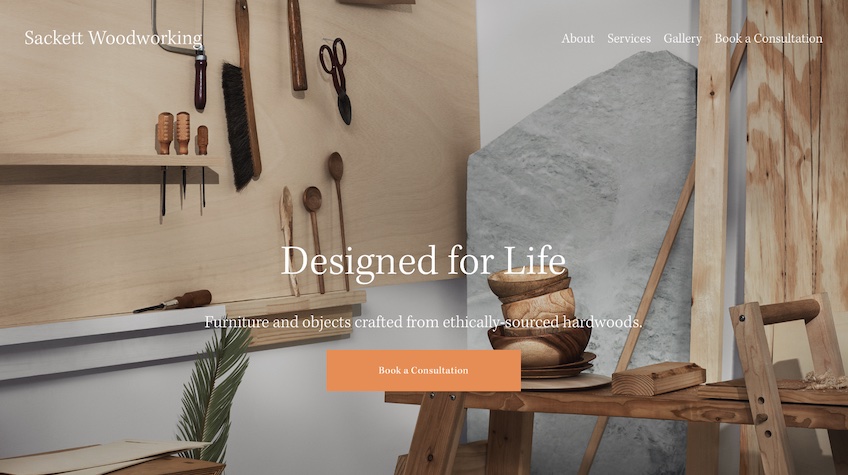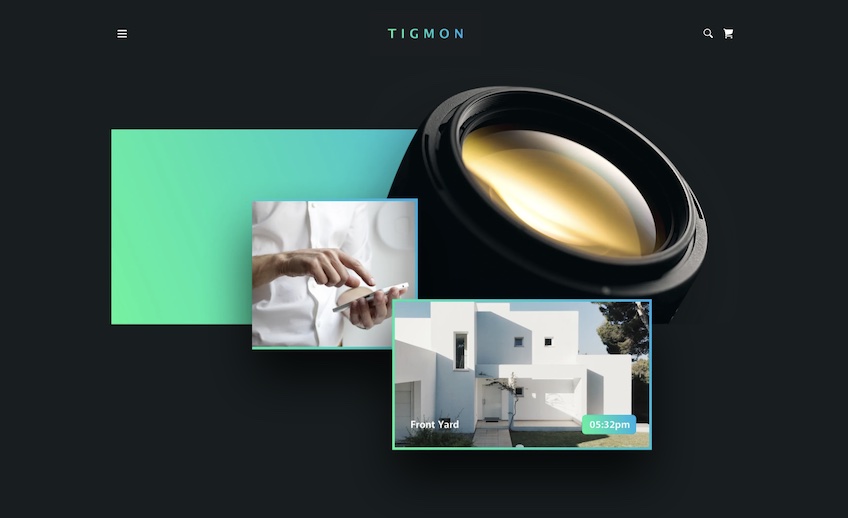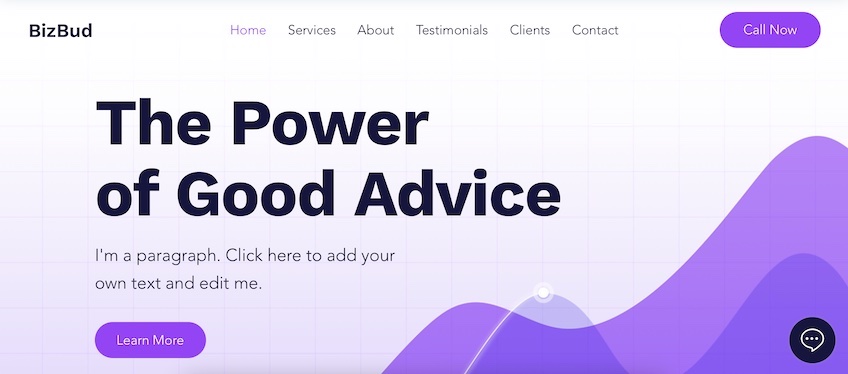A website for your business is no longer an added bonus that sets you above your competition—it’s a necessity. As Bill Gates once put it, “If your business is not on the internet, then your business will be out of business.”
The associated costs of running a business website can vary greatly. For example, an attractive ecommerce website that you build and run on your own can cost as low as $50 per month, while an ultra-professional and fully customized website can cost well into the thousands just to get it started.
The good news is that, because everyone and their mother is building a website these days, the market for doing so is very competitive. Web hosting providers, DIY website builders, and private web designers are all trying to outdo each other with lower prices and more inclusive packages.
If you’re a smart shopper, you can take advantage of deals and special offers and end up with a top-tier website for a steal of a price.
How Much Does a Typical Website Cost?
Talking about a “typical” website cost is a little like talking about a “typical” jewelry cost or a “typical” stock price. There are many different ways to go about making a website, and there can be huge cost differences as a result. Plus, the kind of website you build can play a factor as well.
The building method you end up choosing should depend on your budget, your intended use for your website, and how advanced or unique you want it to be. To keep things simple, we’ll talk about the two main routes you could go here: do it yourself, or hire a web designer to do it for you.
If you’re a DIY kind of person, one of the routes you can take is to do everything solo, and you’ll likely encounter a monthly cost of about $20-$70. That comes out to about $240-$840 per year.
On the other hand, if the thought of becoming knee deep in the backend of your own website makes you nauseous, you can always hire a web designer to do it for you. You can expect web designers to charge $2,000-$5,000 up front, with annual maintenance costs of around $500-$1,000.
Reasons To Build a Website Yourself
- This option is obviously much more cost effective. If you need to stay within a strict budget and you’re not under any pressing time constraints, we recommend this method—at least as a starting point.
- Using a DIY website builder can result in a really quick setup. Modern platforms have templates and intuitive interfaces that make the process super easy for first-timers regardless of design or programming experience.
- Using a website builder provides you with much more flexibility, since you’re the master of your own site. When it comes time to make a design change, update information, or add new pages, you won’t be subject to anyone else’s schedule.
Reasons To Hire a Web Designer
- Web designers—at least the good ones—can create websites from scratch, meaning you won’t have to force your vision into the mold of an existing template. Your website will have a uniqueness and aesthetic appeal that you might not be able to achieve with a DIY website builder.
- Web designers can also build websites with future growth in mind. The freeform nature of manually coded websites will allow you to expand and add new features as your business grows and changes.
- There’s so much more to starting and growing a business than just creating a website. If you’re constantly bombarded with other competing tasks and simply don’t have enough free time, hiring a web designer can be a great way to divvy up responsibilities and take a load off your shoulders.
The Cost of Building a Website Yourself
If you’re giving it a go on your own, you’ll want to be familiar with three main aspects that are essential to the formation of any functioning website. Think of them as building blocks, each one serving a particular function.
The Building Blocks
First, you need a domain name. That’s simply a web address for your site. Your domain name is how people find and remember your website.
Second, you need some space on the internet. A web host is what provides your site with actual digital real estate. Choose a hosting provider that will give your website a portion of space on its servers. While your domain name is your website’s coordinates, your web host provides the foundation and space where your actual site can be constructed.
Finally, an SSL certificate confirms that a website is protected from hackers and cyberattackers. If you’ve ever clicked on a website and been redirected to a message that says, “This site is not secure,” that means the website didn’t have an SSL certificate. SSL certificates are sometimes free and always mandatory for online stores—so if you’re in the business of selling, you will need one.
Full Cost Breakdown
Below is an overview of the costs you should expect to incur in the process of building your own website. We’ve included a little bit of everything, so hopefully you won’t be surprised by any random fees or fine-print items at the last minute.
Also, keep in mind that the numbers you see here can be at the extreme highs and lows of the reasonable cost range. Many website-building platforms will fall somewhere in the middle of these ranges.
- Domain name: $10-$20 per year
- Web hosting: $50-$180 per year
- SSL certificate: $50-$250 per year
- Ecommerce functionality: $10-$50 per year
- Website design template: $0-$100 per year
- Call scheduling calendar tool: $0-$325 per year
- Stock media assets: $0-$200 per year
The total cost of this setup ranges from $120 to $1,125 per year.
As mentioned before, taking advantage of deals and special packages—for example, paying annually instead of monthly—can help keep your costs low. If you’re smart about it, it’s possible to hover at the lower end of this range without sacrificing any quality or performance.
Website Builders
Some of the most popular website builders on the market today are Squarespace, Wix, and GoDaddy. What’s interesting is that some of them started out by specializing in one thing—such as domain registry or pure web design—and then evolved until they started to include everything.
Now, many of these all-in-one website design platforms offer a way for you to purchase a domain name, host your website, obtain an SSL certificate, and access big collections of design templates in the same place.
Of course, the best website builders out there will inherently come at a steeper price for doing it all—usually around $400-$700 per year. That said, for many people, the ease and convenience of having everything you need in one easy-to-use platform cannot be overstated.
The screenshot below shows an example of an art and design template from Squarespace:

This screenshot shows an example of a real estate template from GoDaddy:

And this one shows an example of a consulting template from Wix:

The Cost of Having a Designer Build Your Website
Website prices vary tremendously based on the scope and type of site you’re looking to build—and this holds true for the costs of hiring web design individuals and teams as well.
Web designer costs fall into three basic categories depending on what you need your website to do:
- For simple websites with a few pages and lightweight content management you can expect to pay anywhere from $500-$2,000 up front. This may or may not include room for ongoing updates and additions—which would only cover the first year, probably.
- Most business owners will need ecommerce functionality. This includes a high number of pages, a shopping cart and checkout screen, the ability to accept payments, and customer order tracking. For a site like this, many web designers will charge an upfront fee of $2,000-$5,000.
- Websites for larger enterprises that need custom-built functionalities and advanced tracking or analytical features can run from $5,000 to well over $10,000 up front.
Maintenance Costs
Unless you’re a proficient coder yourself, one of the main downsides to hiring a designer to build your website for you is the resulting dependency you’ll encounter by relying on them to fix any bugs or make any updates. This kind of regular maintenance can be very costly.
If your site doesn’t require constant changes, $500-$1,000 is a reasonable estimate for annual maintenance costs from a web designer. Of course, it all depends on how much maintenance and updating your website needs, how much time these fixes take, and the particular contract that you’ve signed with your designer.
If you’ve got a simple design in mind, sometimes working with an individual web designer is preferable to working with an entire agency, as pricing and terms can be much more flexible. Just make sure you choose a designer with a good reputation and a solid portfolio of past work.
How To Find a Web Designer
Freelance websites like Upwork and Fiverr are great places to start if you’re looking to hire an individual designer.
For full-on web design services, we’ve previously recommended Web.com, Lounge Lizard, and several others on our full list of the best web design services.
6 Tips For Keeping Website Costs Low
Whether you choose to do it yourself or hire a web designer, many of the decisions you make can help you stay on the lower end of the cost spectrum.
- Plan ahead
- Clearly define the purpose of your website. It can be things like selling goods and services in an online shop, sharing information and research on a blog, or engaging with a community on a self-hosted forum. Either way, establishing your focus ahead of time can help you avoid needless early spending on unnecessary features.
- Once your website is up and running, keep planning ahead for the inevitable expansion of your business. If you’re going to need more pages, new features, or a total overhaul of your layout down the line, having a roadmap in place will help you avoid redundant investments.
- Stick to the bare minimum
- Be conservative about flashy features that cost money to set up or maintain. Adding complexity to your site can enrich the user experience, but it can also take away from it.
- Most razzle-dazzle has little-to-no effect on actual conversions. It also costs more, takes more effort to maintain, and things can go wrong with much less provocation. Only add what you need so you can track your best performing elements and double down on those for a better ROI.
- Choose the right platform
- Don’t settle for the first website builder or hosting provider that you stumble upon. Each one may have different capabilities, ease of use, available themes, plugins, and monthly costs. Figure out which ones might work best for the plan you’ve already established and go from there.
- Take advantage of free trials! Tons of website builders and hosting providers offer zero-cost test runs, and while it may seem tedious to try each one, it could end up being much better than pouring days of work into building a website only to realize your platform can’t do what you need it to.
- Outsource wisely
- You technically don’t have to choose between building a website yourself and hiring a web designer—it’s not always an either/or decision. Consider making an account with a website builder, and then also hiring a freelancer to design the whole thing for you.
- Similarly, you could also pay the hefty upfront cost of hiring a web designer, then outsource the ongoing maintenance to a cheaper freelancer who knows the basics.
- Use free stock assets
- Many website builders come with a huge selection of royalty-free stock images and videos. While the paid ones are generally better, this isn’t always the case. Do a little digging and you might find some gems.
- Websites like Unsplash, Pixabay, Font Awesome, and Flaticon offer a variety of free and/or cheap stock images, videos, and icons.
- Scale gradually
- Although the “go big or go home” mentality feels natural when starting a new website, try to start small and scale up only as your traffic demands it.
- Get in the habit of regularly monitoring your website’s performance and traffic. Once your current hosting provider is at its limit, then consider making a well-earned upgrade.
Remember, most business owners will be able to create a fully functional, aesthetically pleasing website for under $600 per year. You shouldn’t ever need to pay more than around $1,200 per year.
For those looking to hire professional web designer services, you’ll likely be paying $2,000-$5,000 up front, with annual maintenance costs of around $750. If you start small and work your way up, the success of your website can someday cover those costs—and then some.
